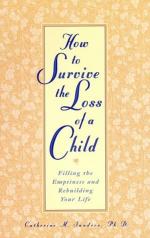|
This section contains 7,881 words (approx. 27 pages at 300 words per page) |

|
SOURCE: "Controlling Death and Sex: Magnification v. the Rhetoric of Rules in Dickens and Thackeray," in Sex and Death in Victorian Literature, edited by Regina Barreca, The Macmillan Press, Ltd., 1990, pp. 120-39.
In the following essay, MacKay explores the strong erotic elements in depictions of death found in particular works of Charles Dickens, George Eliot, and William Makepeace Thackeray.
Shall I believe
That unsubstantial Death is amorous,
And that the lean abhorrèd monster keeps
Thee here in dark to be his paramour?
(Shakespeare, Romeo and Juliet, 5.3.102-5)1
He held her, almost as if she were sanctified to him by death, and kissed her, once, almost as he might have kissed the dead. (Dickens, Our Mutual Friend, p. 764)
Perhaps because sex and death involve such intense, primal emotions, the rhetoric of each often comes to resemble that of the other—that is, an intense poetic rendering of death...
|
This section contains 7,881 words (approx. 27 pages at 300 words per page) |

|


